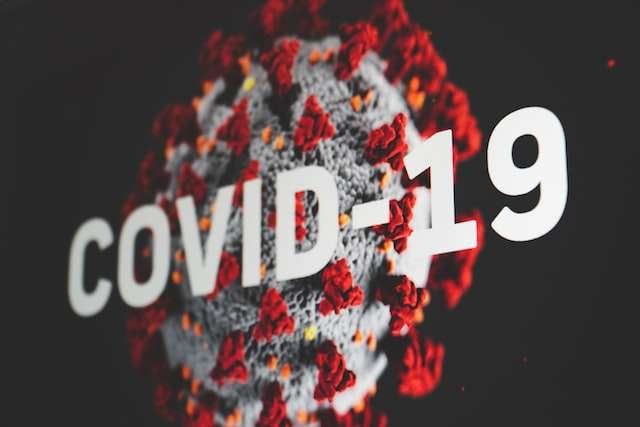Chronic kidney disease (CKD), also known as chronic renal disease, is a progressive loss of kidney function over a period of months or years. The symptoms of worsening kidney function are not unique, and might include feeling generally unwell and experiencing a reduced appetite. Often, chronic kidney disease is diagnosed. As a result ofscreening of people known to be at risk of kidney problems, such as those with high blood pressure or diabetes over weight and those with a blood relative with CKD. This disease may also be identified when it leads to one of its recognized complications, such as cardiovascular disease, anemia, pericarditis or renal osteodystrophy. CKD is a long-term form of kidney disease; thus, it is differentiated from acute kidney disease (acute kidney injury) in that the reduction in kidney function must be present for over 3 months. CKD is an internationally recognized public health problem affecting 5–10% of the world population.
Chronic kidney disease is identified by a blood test for creatinine, which is a breakdown product of muscle metabolism. Higher levels of creatinine indicate a lowerglomerular filtration rate (GFR) and, as a result, a decreased capability of the kidneys to excrete waste products. Creatinine levels may be normal in the early stages of CKD, and the condition is discovered by testing of a urine sample. It may show the kidney is allowing the loss of protein or red blood cells into the urine. To fully investigate the underlying cause of kidney damage, various forms of medical imaging, blood tests, and sometimes a kidney biopsy(removing a small sample of kidney tissue) are employed to find out if a reversible cause of the kidney malfunction is present.
CKD is initial without specific symptoms and is generally only detected as an increase in serum creatinine or protein in the urine. As the kidney function decreases.

- Blood pressure is increased due to fluid overload and production of vasoactive hormones created by the kidney via the renin-angiotensin system, increasing one’s risk of developing hypertension and/or suffering from congestive heart failure.
- Urea accumulates, leading to azotemia and ultimately uremia (symptoms ranging from lethargy topericarditis and encephalopathy). Due to its high systemic circulation, urea is excreted in eccrine sweat at high concentrations and crystallizes on the skin as the sweat evaporates (“uremic frost“).
- Potassium accumulates in the blood (hyperkalemia Hyperkalemia usually does not develop until the glomerular filtration rate (GFR) falls to less than 20-25 ml/min/1.73 m2, at which point the kidneys have decreased ability to excrete potassium.
- Erythropoietin synthesis is reduced causing anemia.
- Fluid volume overload symptoms may range from mild edema to life-threatening pulmonary edema.
- Hyperphosphatemia, due to reduced phosphate excretion, follows the decrease in glomerular filtration. Hyperphosphatemia is associated with increased cardiovascular risk, being a direct stimulus to vascular calcification.
- Iron deficiency anemia, which increases in prevalence as kidney function decreases, is especially prevalent in those requiring haemodialysis. It is multifactoral in the cause but includes increased inflammation, reduction in erythropoietin, and hyperuricemia leading to bone marrow suppression.
People with CKD suffer from accelerated atherosclerosis and are more likely to develop cardiovascular disease than the general population.
- Sexual dysfunction is very common in both men and women with CKD. A majority of men have a reduced sex drive, difficulty obtaining an erection, and reaching orgasm, and the problems get worse with age. A majority of women have trouble with sexual arousal and painful menstruation and problems with performing and enjoying sex
- Ranges for serum creatinine are 45-90 μmol/L for women and 60-110 μmol/L)for men. The significance of a single creatinine value must be interpreted in light of the patient’s muscle mass. A patient with a greater muscle mass will have a higher creatinine level. While a baseline serum creatinine of 150 μmol/L) may indicate normal kidney function in a male body builder, a serum creatinine of 110 μmol/L can indicate significant renal disease in an elderly female
- The convertion of US reading to Canada Reading in Creatinine level
US Reading x 88.5= Canada Reading
Noramly the creatinine level for Dialysis Two readings that should be looked for in Blood and Urine tests are GFR and Craeatinine levels.
Severity-based stages]
Normal GFR is 90-120 mls/min. The units of creatinine vary from country to country.
The loss of protein in the urine is regarded as an independent marker for worsening of kidney function and cardiovascular disease.
Stage 1
Slightly diminished function
Stage 2
Mild reduction in GFR (60–89 ml/min/1.73 m2) with kidney damage.
Stage 3
Moderate reduction in GFR (30–59 ml/min/1.73 m2):
Stage 4
Severe reduction in GFR (15–29 ml/min/1.73 m2)
Stage 5
Established kidney failure (GFR <15 ml/min/1.73 m2), permanent renal replacement therapy, or end-stage kidney disease.
The typical human reference is 440 but for some patients go up to 500.
Proper diet is an essential treatment of kidney disease. If kidneys are damaged, creatinine level rises. Creatinine level is an important indicator of how well kidney work
High protein foodHigh protein food
Patients with kidney disease should avoid high-protein food in case it aggravates the burden of kidneys
High sodium food
Overmuch sodium intake will cause water-sodium retention thus increase swelling. It is also a dangerous factor in hypertension. High sodium food should be avoided as canned food, dry food, fast food, soup and so on to reduce the workload of the kidney to lower high creatinine.
High phosphorous and high potassium food
One of the kidney functions is to keep electrolyte balance. If your phosphorous and potassium levels are high, you should limit phosphorous and potassium intake. These are high phosphorous food: bran, sunflower seeds, toasted wheat germ, cheese, nuts, roasted soya beans, and bacon. Foods contain high potassium include white beans, dark leafy greens, baked potatoes, dried apricots, fish, yogurt, avocados, bananas and so on.



